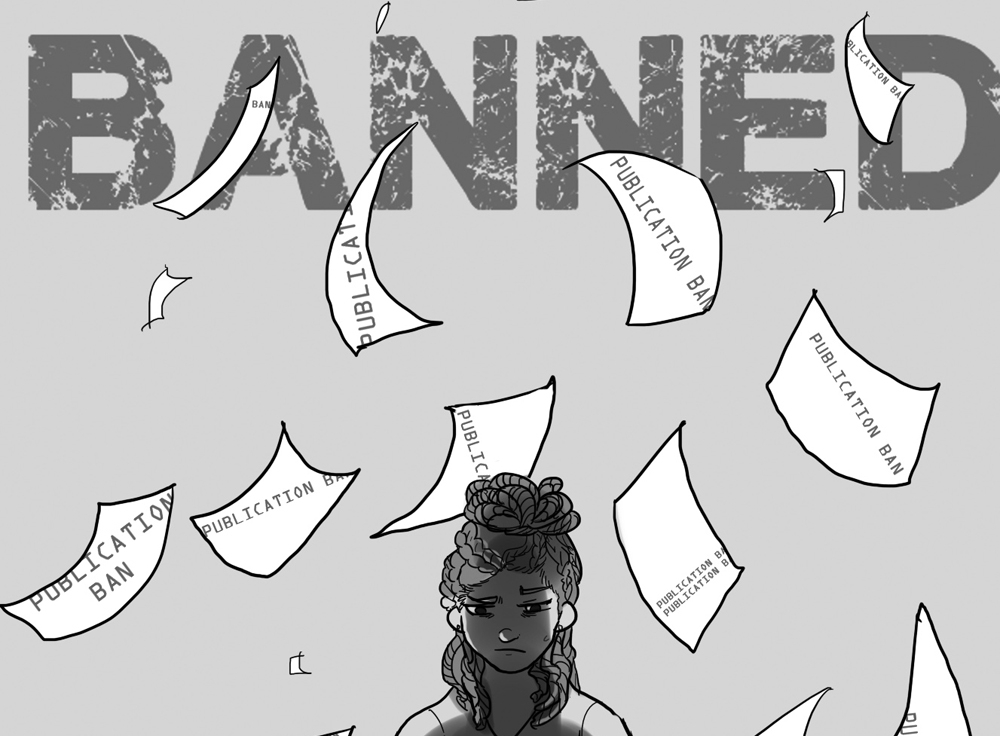Victoria Goldberg | Editor-in-Chief
Featured illustration courtesy of Jasmine Wiradharma
Journalism is a difficult profession. While they don’t have to pass the bar or go to advanced schooling for eight-plus years, journalists take a personal oath to strive for the truth in the public interest.
Crime reporting is one of the more difficult tasks a journalist comes across, where the privacy of both the victim—or rather, survivor—and the accused comes into question.
In the spring of 2016, three days after the police sent out a news release, a publication ban was imposed on the identity of a 30-year-old Toronto woman whose torso had been found behind a butcher’s store. The publication ban was eventually lifted, leaving many journalists confused, as the names of both the victim and the man arrested had already been released to the public.
What was the point of the ban? And what was the point of then retracting it?
The Criminal Code has several sections that account for the reasoning behind publication bans, such as the protection of a young defendant’s identity, any evidence that could identify a complainant or witness in a sexual offence or to preserve the defendant’s right to a fair trial.
The decision to impose a publication ban ultimately comes down to the court and the presiding judge. However, the wording and access to information is unclear and muddy.
As journalists, and even as members of the public, we are curious creatures. We love gossip, mystery novels and puzzles. As we grow older, and hopefully more mature, we enjoy the gossip and mystery of the headlines. But what good does it do to publish the name of a deceased victim of a crime? What is the purpose of publishing the name of an accused, a person who is supposed to be presumed innocent until proven guilty?
Members of the public are allowed to view and even photocopy court files that have a temporary publication ban, but cannot republish them in any document or broadcast.
As student journalists, we have struggled with this conundrum. If a student is arrested on campus, but not found guilty, are we doing any good by alarming the community of a possible crime, or are we doing harm by ruining a potentially innocent person’s reputation?
The most recent case in Excalibur’s dealings with publication bans includes the R. v. Ururyar case, in which one York TA was found guilty of sexually assaulting a colleague. The survivor, Mandi Gray, purposely waived a publication ban on the trial: nothing was off limits.
In another case at the University of Windsor, a court order prohibited the publication of any information that would identify a sexual assault survivor. Her attacker’s identity, however, has been published numerous times, and he is now attending York.
Does his identity matter? Is mentioning his name in our headlines in the public interest of the York community? Or is he entitled to his privacy and right to an education, a right we might put at risk by publishing his name?
There is no black and white here. There is no line that separates what is right and wrong, neither in print nor in real life.



Full of salient points. Don’t stop beeliving or writing!